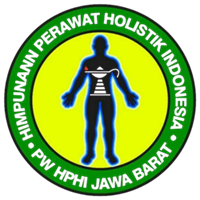Decreased Foot Sensitivity as a Predictor of Diabetic Foot Ulcers
DOI:
https://doi.org/10.52221/jvnus.v6i1.550Keywords:
diabetes mellitus, diabetic foot ulcers, foot sensitifityAbstract
Introduction: Diabetic foot ulcers are a complication that often occurs in people with diabetes mellitus. This complication begins with a decrease in foot sensitivity which leads to neuropathy, resulting in frequent trauma to the feet. Decreased foot sensitivity in the form of decreased sensation of heat, cold, and pain is a dangerous complaint because it has a very high risk of causing foot ulcers or neuropathic foot ulcers. Objective: This study aimed to determine the relationship between the level of foot sensitivity and the incidence of dibetic foot ulcers in diabetes mellitus patients. Method: The type of research is a descriptive correlation with a cross-sectional approach. The population, all DM pstients at Internal Medicine Clinic 1 and 2 Indramayu District Hospital. The sample was 48 people taken by accidental sampling. Data collection tools used observation sheets and 10 G monofilament, while data analysis techniques used the Chi-square test. Result: The research results obtained from 44 respondents showed that 22 respondents (%) experienced neuropathy. Of these, 21 (95.5%) had ulcers. Meanwhile, of the 26 respondents who did not have neuropathy, 21 (80.8%) did not have ulcers. The results of further analysis obtained a p-value of 0.000 and an OR value of 88.2. Conclusion: The conclusion from this study is that there is a relationship between the level of sensitivity and the incidence of diabetic foot ulcers. DM patients who experience neuropathy are 88.2 times more likely to develop ulcers than those who do not experience neuropathy. Suggestions are given to nurses to continue making efforts to prevent diabetic foot ulcers by checking the sensitivity of the patient's feet regularly, at least once a year.
Downloads
References
American Diabetes Association. (2017). Standards of Medical Care in Diabetes 2017, Vol. 40. USA : ADA.
Black, J.M & Hawks, J.H, (2014). Keperawatan Medikal Bedah: Manajemen Klinis untuk Hasil yang Diharapkan, Edisi 8-Buku 2 (Elsevier). singapura: Salemba Medika.
Dinas Kesehatan Indramayu. (2021), Data Penderita Diabetes Melitus di Kabupaten Indramayu.
Gerawarapong C. (2015). Association of Peripheral Autonomic Neuropathy and Sympathetic Skin Response in the Patients with Diabetic Polyneuropathy: A Pilot Study in Thailand. J Med Assoc Thai. 98(12):1222-30
International Diabetes Federation (2021). IDF Diabetes atlas 10th edition 2021. Retrived from https://www.diabetesatlas.org.
Kementerian Kesehatan RI. (2018). Hasil Utama Riskesdas 2018..
Kiani ,J., Moghimbeigi,A., Azizkhani,H.,& Kosarifard,S. (2013). The prevalence and associated risk factors of peripheral diabetic neuropathy in Hamedan, Iran. Arch Iran Med. 16(1):17-9. doi: 013161/AIM.006.
Mariam et al. (2017). Prevalence of Diabetic Foot Ulcer and Associated Factors among Adult Diabetic Patients Who Attend the Diabetic Follow-Up Clinic at the University of Gondar Referral Hospital, North West Ethiopia, 2016: Institutional-Based Cross-Sectional Study. J Diabetes Res.;2017:2879249. doi: 10.1155/2017/2879249
Naemi, R., Chockalingam, N., Lutale, J. K., & Abbas, Z. G. (2020). Predicting the risk of future diabetic foot ulcer occurrence: a prospective cohort study of patients with diabetes in Tanzania. BMJ Open Diabetes Research & Care, 8(e001122). https://doi.org/http:// dx. doi. org/ 10. 1136/ bmjdrc- 2019- 001122
Norwood, D.V. (2011). Diabetic foot ulcer. EBSCO Publishing
Rosyid, N. F.(2017). Etiology, Pathophysiology, Diagnosis, and Management of Diabetics’ Foot Ulcers. International Journal of Research in Medical Sciences, pISSN 2320-6071
Parisi et al. (2016). Baseline characteristics and risk factors for ulcer, amputation and severe neuropathy in diabetic foot at risk: the BRAZUPA study. Diabetol Metab Syndr 17;8:25. doi: 10.1186/s13098-016-0126-8.
Priyanto, S. (2012). Pengaruh Sensitivitas Kaki Dan Kadar Glukosa Darah Pada Agregat Lansia DM Di Magelang. Thesis. FIK Universitas Indonesia.
Rosyida, K. (2016). Gambaran Neuropati Perifer Pada Diabetisi Di Wilayah Kerja Puskesmas Kedungmundu Semarang.
Singer, A. J., Tassiopoulos, A., & Kirsner, R. S. (2018). Evaluation and Management of Lower-Extremity Ulcers. New England Journal of Medicine, 378(3), 301–303. https://doi.org/10.1056/NEJMc1715237
Smeltzer, S.C. & Bare, B.G. (2013). Buku Ajar Keperawatan Medikal Bedah Edisi 8 Volume 2 (8th ed.). Jakarta: Penerbit Buku Kedokteran EGC.
Naemi, R., Chockalingam, N., Lutale, J. K., & Abbas, Z. G. (2020). Predicting the risk of future diabetic foot ulcer occurrence: a prospective cohort study of patients with diabetes in Tanzania. BMJ Open Diabetes Research & Care, 8(e001122). https://doi.org/http:// dx. doi. org/ 10. 1136/ bmjdrc- 2019- 001122
Tandra H. (2017). Segala Sesuatu Yang Harus Anda Ketahui Tentang Diabetes. Jakarta: Penerbit Gramedia pustaka utama.
Tholib, A. M. (2016). Buku Pintar Perawatan Luka Diabetes Melitus. Jakarta: Salemba Medika.
Downloads
Published
How to Cite
Issue
Section
License
Copyright (c) 2024 Wayunah, Wiwin Nur Aeni, Martin Kuncoro, Muhammad Saefulloh

This work is licensed under a Creative Commons Attribution 4.0 International License.















